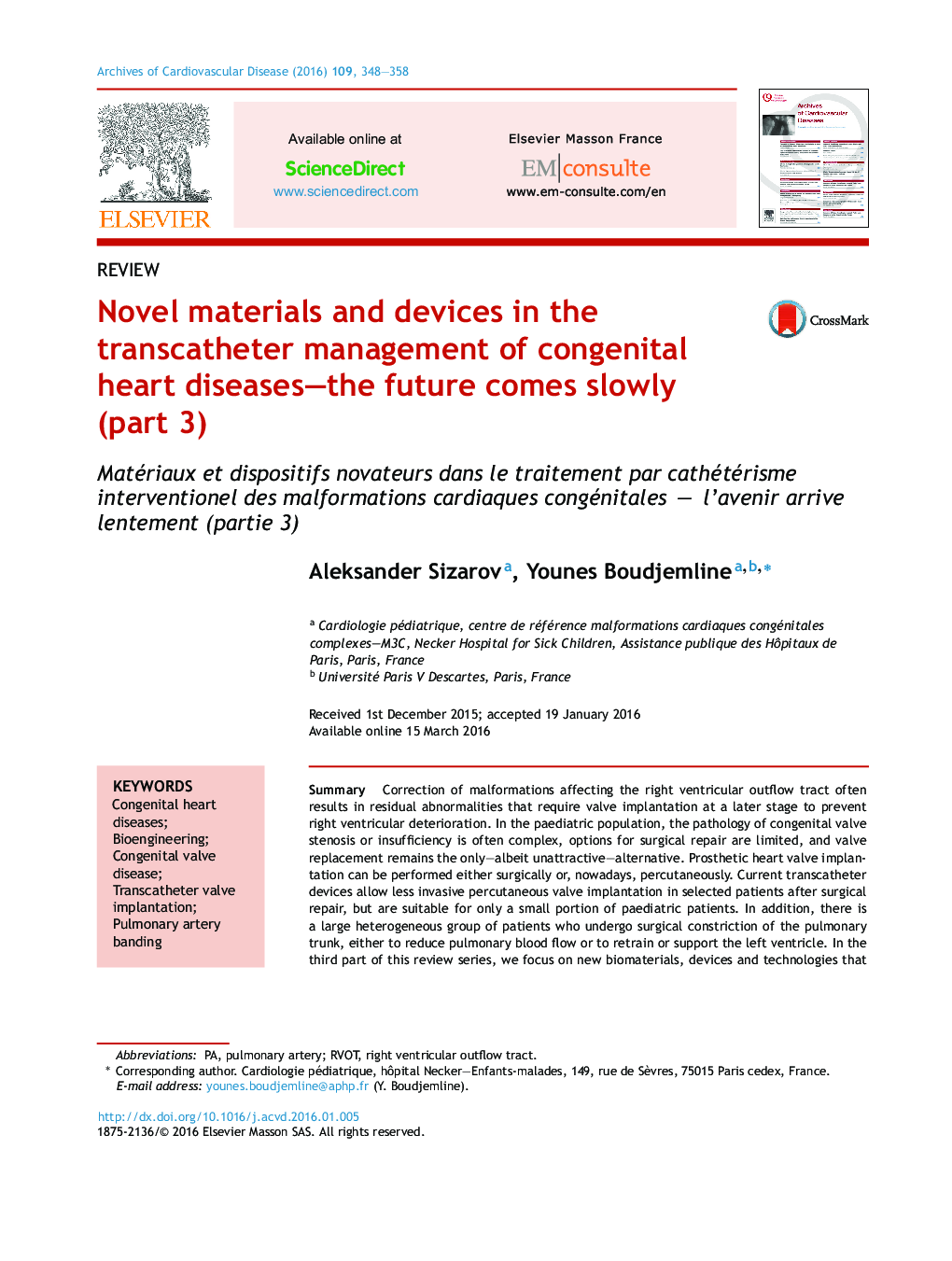| کد مقاله | کد نشریه | سال انتشار | مقاله انگلیسی | نسخه تمام متن |
|---|---|---|---|---|
| 2888651 | 1574334 | 2016 | 11 صفحه PDF | دانلود رایگان |
SummaryCorrection of malformations affecting the right ventricular outflow tract often results in residual abnormalities that require valve implantation at a later stage to prevent right ventricular deterioration. In the paediatric population, the pathology of congenital valve stenosis or insufficiency is often complex, options for surgical repair are limited, and valve replacement remains the only–albeit unattractive–alternative. Prosthetic heart valve implantation can be performed either surgically or, nowadays, percutaneously. Current transcatheter devices allow less invasive percutaneous valve implantation in selected patients after surgical repair, but are suitable for only a small portion of paediatric patients. In addition, there is a large heterogeneous group of patients who undergo surgical constriction of the pulmonary trunk, either to reduce pulmonary blood flow or to retrain or support the left ventricle. In the third part of this review series, we focus on new biomaterials, devices and technologies that have the potential to extend transcatheter valve implantation to a broader spectrum of congenital cardiovascular lesions, with safe and durable results in children, and on transcatheter options for the creation of a partial obstruction within the pulmonary trunk (pulmonary artery banding).
RésuméLa correction des malformations de la voie d’éjection droite se traduit souvent par des anomalies résiduelles, qui nécessitent l’implantation de valves pour empêcher la détérioration du ventricule droit. Dans la population pédiatrique, la pathologie congénitale des valves cardiaques est souvent complexe. Les options de réparation chirurgicale sont limitées et le remplacement de la valve reste la technique la plus utilisée. Les dispositifs percutanés permettent l’implantation moins invasive de valves chez une petite partie de patients soigneusement sélectionnés. De plus, il y a un groupe hétérogène et important de patients nécessitant un cerclage de l’artère pulmonaire, soit pour réduire le débit sanguin pulmonaire et le risque d’artériolite pulmonaire ou pour ré-entrainer un ventricule gauche sous-pulmonaire. Dans la troisième partie, nous nous concentrons sur les nouveaux biomatériaux, dispositifs et technologies, qui ont le potentiel d’élargir les indications du remplacement valvulaire percutané, et sur les options percutanées de création d’un cerclage endovasculaire de l’artère pulmonaire.
Journal: Archives of Cardiovascular Diseases - Volume 109, Issue 5, May 2016, Pages 348–358
